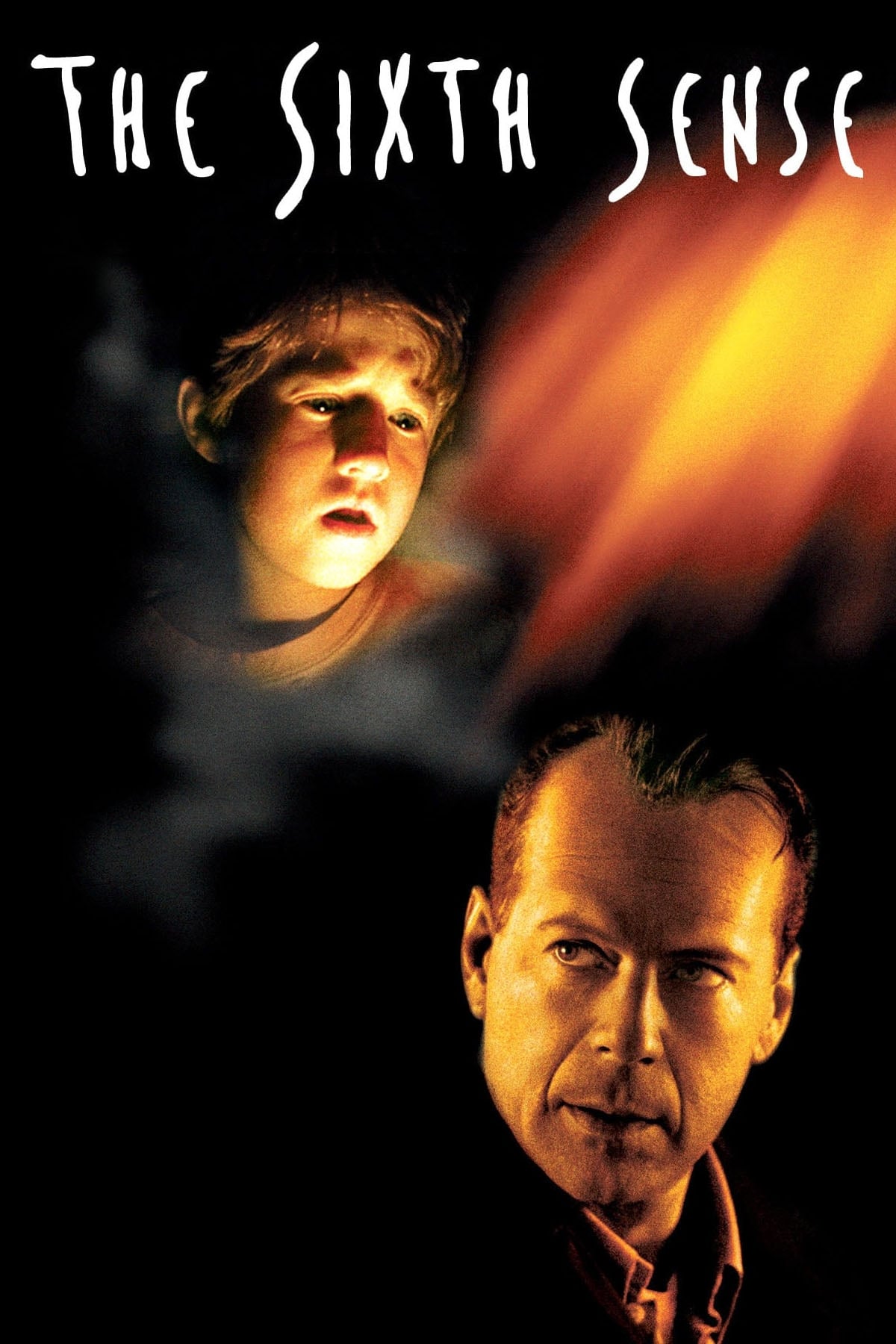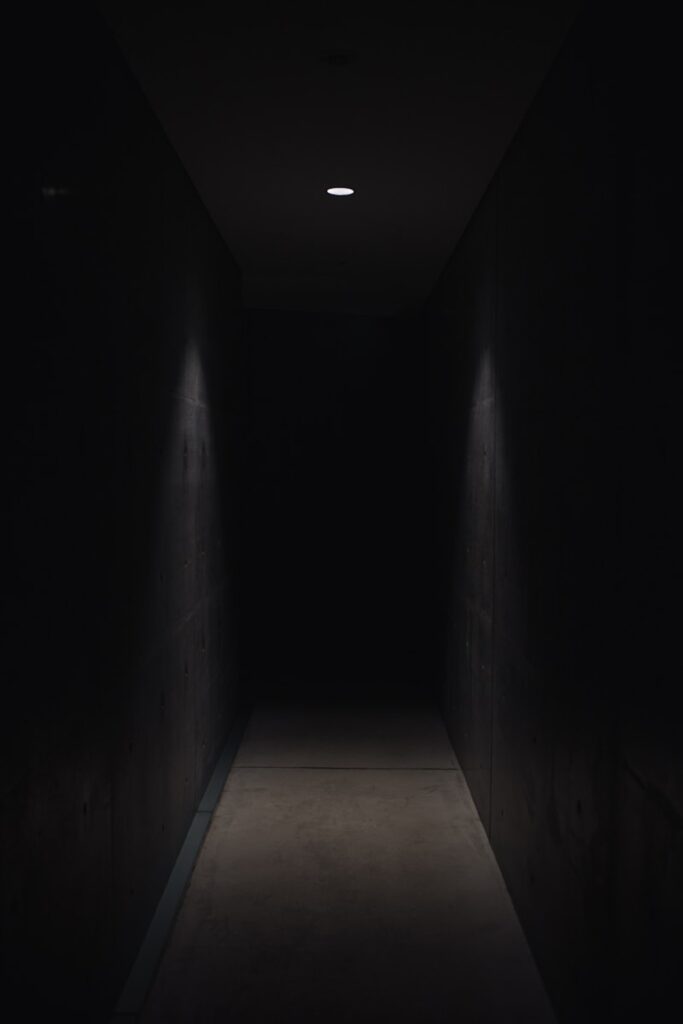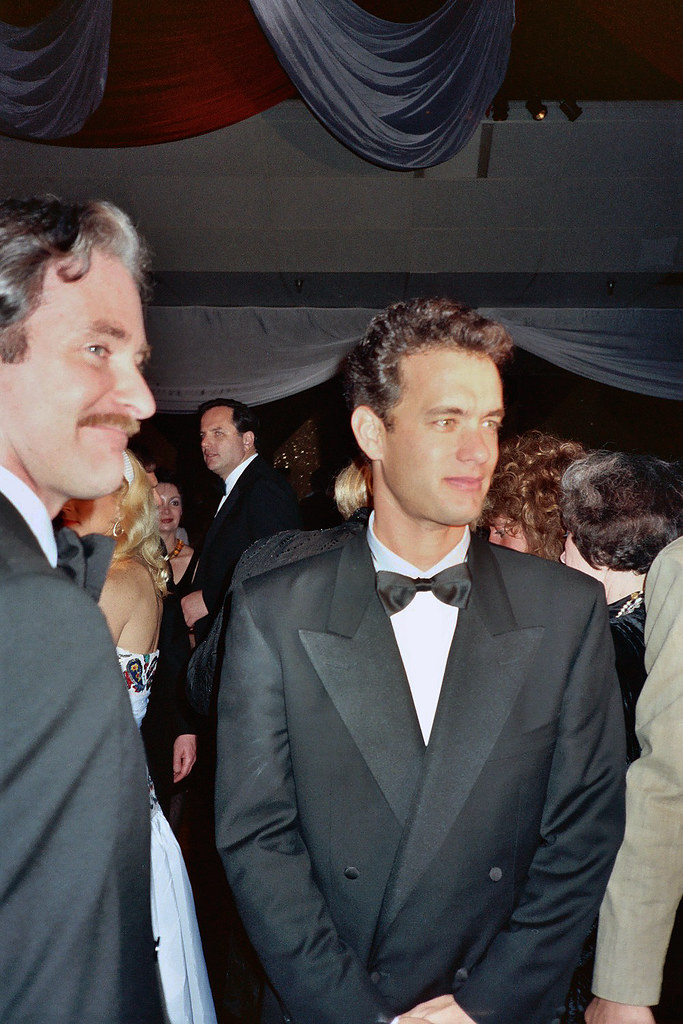
Nothing thrills a movie audience like a twist ending they didn’t see coming. These are the moments that truly define a cinematic experience, leaving us in stunned silence as the credits roll, compelled to immediately re-evaluate everything we thought we knew. While some films might lean too heavily on their conclusions to validate the entire narrative, when executed effectively, these “pull-the-rug-out-from-under-you moments” are truly unforgettable, carving out a permanent place in our collective pop culture consciousness.
From horror to sci-fi, and even unexpected dramas, shocking twist endings transcend genre boundaries, proving that the human mind loves to be surprised and challenged. They invite us into a narrative labyrinth, subtly laying breadcrumbs we only recognize in hindsight, transforming a simple viewing into an active intellectual engagement. A truly brilliant twist not only provides a startling reveal but also deepens our understanding of the characters, their motivations, and the very fabric of the story, making subsequent re-watches an entirely new, richer experience.
Today, we embark on an exploration of some of cinema’s most ingenious and impactful twist endings, dissecting the genius behind their construction and the profound ways they reshaped our perception of the films themselves. These are the narratives that mastered the art of misdirection, delivered a knockout punch in their final moments, and solidified their place in the pantheon of unforgettable cinematic achievements. Get ready to revisit some truly mind-bending conclusions that left us staring stunned at the screen.

1. **The Sixth Sense (1999)**When M. Night Shyamalan’s ‘The Sixth Sense’ arrived in 1999, it wasn’t just a hit; it was a cultural phenomenon that fundamentally shifted expectations for modern thrillers. The film, a gripping debut from Shyamalan, plunged audiences into the perplexing world of Cole Sear, a young boy haunted by visions of the dead, and his compassionate child psychologist, Malcolm Crowe. What unfolds is a seemingly straightforward, albeit chilling, narrative about a man trying to help a child with an extraordinary, terrifying gift.
The film masterfully builds tension around Cole’s struggle and Malcolm’s dedicated efforts to understand and assist him. We watch Malcolm grapple with his own demons, including a strained relationship with his wife, as he tirelessly works to unravel the mystery of Cole’s abilities. Bruce Willis delivers an edgy and honest performance as Malcolm, portraying a character deeply invested in his patient’s well-being, seemingly at the expense of his own personal life.
The twist, now common pop culture knowledge, blew audiences’ minds back then and remains a gold standard for cinematic reveals. It is unveiled that Malcolm Crowe is, in fact, one of the “dead people” Cole Sear has been claiming he can see and speak to. This revelation recontextualizes every single interaction Malcolm has had, every subtle clue meticulously placed throughout the film, from his wife’s perceived aloofness to his own inability to connect with others.
The ending to ‘The Sixth Sense’ became one of the most popular film endings ever because of how well it worked upon re-watches. It makes sense in the best way possible, revealing a meticulous narrative construction that rewarded careful attention. Shyamalan’s subsequent career became synonymous with twist endings, though as the context notes, “not all of them have been this good, save for maybe ‘Unbreakable’ (2000).” The original, however, forever cemented its place as a groundbreaking piece of storytelling.
Read more about: 15 Trucks Owners Wish They Never Bought: Unpacking the Crippling Costs and Regrets

2. **The Prestige (2006)**Christopher Nolan’s ‘The Prestige’ is a sophisticated thriller that expertly intertwines the dark arts of magic with the even darker depths of human obsession. The film casts Christian Bale and Hugh Jackman as rival magicians, Borden and Angier, whose bitter competition escalates into a dangerous, all-consuming feud. Their rivalry isn’t just about outperforming each other; it’s about dissecting the very secrets of their craft, pushing the boundaries of what is possible, and enduring untold sacrifices for the sake of the ultimate illusion.
Meanwhile, Borden’s trick seems deceptively simple, yet utterly impenetrable. Angier, consumed by his own deadly secret, fails to see the elegance and brutal commitment behind his rival’s deception. He is too focused on the fantastical, scientific solution, drowning who knows how many versions of himself in his relentless pursuit of an answer that lay hidden in plain sight.
In a twist of breathtaking simplicity and profound emotional weight, Angier finally realizes that the man he knows as “Borden” is actually a set of identical twins. These brothers have been sharing one life, one identity, and one incredibly committed, never-ending magic show. This revelation not only redefines their rivalry but underscores the film’s core themes of sacrifice, identity, and the lengths to which individuals will go for their art. As the context suggests, ‘The Prestige’ is “probably Christopher Nolan’s most well-rounded and emotionally satisfying movie,” with Bale and Jackman delivering truly moving performances that highlight the human cost of their magical endeavors.
Read more about: Hollywood’s Infamous Landmines: 14 Films That Absolutely Decimated A-List Careers

3. **Shutter Island (2010)**Martin Scorsese’s ‘Shutter Island,’ adapted from Dennis Lehane’s noir-ish novel, is a masterclass in psychological tension and atmospheric dread. The film initially presents itself as a taut mystery, with Leonardo DiCaprio’s U.S. Marshal Daniels and Mark Ruffalo’s partner ostensibly sent to a remote hospital for the criminally insane. Their mission: to investigate the bewildering disappearance of a patient named Rachel Solando, adding layers of intrigue to an already unsettling setting.
As Daniels delves deeper into the labyrinthine corridors and the unsettling behavior of the staff and patients, the line between reality and delusion begins to blur, both for the protagonist and the audience. Daniels is convinced that something sinister is at play, suspecting that the hospital is harboring dark secrets and possibly even conducting illegal experiments. His investigation becomes increasingly frantic, fueled by his personal demons and the oppressive atmosphere of the island.
However, what Daniels believes is a complex investigation is, in fact, an elaborate intervention. In a profound and heartbreaking twist, his doctors eventually come clean: Daniels is actually Andrew Laeddis, a dangerously violent patient at the asylum. The entire “investigation” has been an extreme, theatrical treatment designed to break him out of his deeply entrenched delusion, a desperate attempt to force him to confront the horrifying truth of his past.
As the context notes, ‘Shutter Island’ builds “slowly and steadily, with exquisite camerawork, Scorcese’s hallmark filmmaking, and above all, DiCaprio’s edgy and honest performance.” The film presents a classic “I’m-one-of-them” ending, but Scorsese’s masterful execution makes it uniquely effective. It delves into universal human emotions relating to confusion, embarrassment, and acceptance, challenging our perceptions of sanity and the nature of trauma, leaving us to ponder the tragic weight of Laeddis’s final, fleeting moment of lucidity before being led off for a lobotomy.
Read more about: Can You Solve These? 8 Whodunit Movies That Are Absolutely Perfect From Start To Finish!

4. **Memento (2000)**Christopher Nolan’s ‘Memento’ stands as a groundbreaking achievement in non-linear storytelling and psychological suspense, cementing his status as an innovative filmmaker. The film centers on Leonard Shelby, portrayed by Guy Pearce, a man afflicted with anterograde amnesia, a condition preventing him from forming new memories. His world is a constant present, punctuated by brief, fading recollections of an immediate past, yet he remains fixated on a singular, driving mission: to avenge his wife’s murder, which also caused his amnesia.
Leonard’s desperate quest for justice forces him to devise an intricate system for retaining crucial information. He tattoos important pieces of evidence and clues onto his body, takes Polaroid photos, and scribbles notes to himself, constructing a fragmented, externalized memory. The film brilliantly mirrors his condition by unfolding in reverse chronological order, plunging the audience into Leonard’s disorienting reality, where every piece of information is a puzzle piece that may or may not fit.
The twist in ‘Memento’ isn’t a single, definitive reveal, but rather a slow, unsettling unraveling of Leonard’s own reliability as a narrator. As the narrative progresses backward, we learn that the truth surrounding his wife’s death is far more ambiguous and tragic than his self-imposed narrative. “Unfortunately for those he’s after, they might also all be lies,” the context observes, hinting at the unsettling possibility.
The chilling suggestion arises that Leonard’s wife may have actually died due to an accidental overdose of insulin, administered by him. This possibility transforms his elaborate quest for vengeance into a self-constructed delusion, a coping mechanism for a truth too painful to bear. The film leaves the audience in a state of unsettling uncertainty, questioning everything. As the context aptly states, “in a movie populated by characters whose reliability is in question, nothing is for certain,” making ‘Memento’ a powerful exploration of memory, identity, and the stories we tell ourselves to survive.
Read more about: Decoding the Labyrinth: 10 Complicated Movies That Left Audiences Asking ‘What Just Happened?’

5. **Saw (2004)**The original ‘Saw’ film, released in 2004, wasn’t just a horror movie; it was a phenomenon that spawned a massive franchise, deeply impacting the landscape of modern horror. It introduced audiences to Jigsaw, a truly unique and terrifying serial killer obsessed with setting elaborate, psychological “games” for his victims. These aren’t random acts of violence, but meticulously designed death traps meant to force his victims to confront their own failings and desire to live.
The film’s premise locks two strangers, Adam and Lawrence, in a dilapidated bathroom, chained to pipes on opposite ends of the room, with a seemingly lifeless corpse lying between them. Their struggle to survive and understand their predicament forms the core of the narrative, as they discover clues and horrifying dilemmas, each designed to test their moral fortitude and their will to endure. The tension is palpable, the stakes unimaginably high, and the psychological torment is as brutal as the physical.
Amidst the escalating terror and the frantic scramble for a way out, the film delivers one of the horror genre’s most iconic and “mind-blowing moments.” The seemingly inanimate corpse, which has been a gruesome fixture in the room throughout their ordeal, suddenly rises from the floor. This terrifying reveal is not just a cheap jump scare; it’s a profound narrative shock that turns the entire film on its head.
The twist confirms that Jigsaw hasn’t been watching his psychological death trap unfold from afar. Instead, he has been in the room with them the entire time, posing as a victim, a silent observer of their desperation and suffering. This audacious reveal solidified ‘Saw’s’ place in horror history, launching a franchise known for its intricate plotting and shocking conclusions, and proving that sometimes, the most terrifying monster is the one you never saw coming, hiding in plain sight.

6. **Psycho (1960)**Alfred Hitchcock’s 1960 masterpiece, ‘Psycho,’ remains a towering achievement in cinematic suspense and psychological horror, a film that redefined the genre and pushed the boundaries of what was acceptable on screen. The film is famously known for its shocking twist in the first act, where Janet Leigh’s Marion Crane, the presumed protagonist, is brutally murdered in the iconic shower scene. This unprecedented narrative move alone shattered audience expectations and demonstrated Hitchcock’s fearless storytelling.
However, the shower scene, while groundbreaking, is not the only surprise the classic film has in store. As detective Arbogast investigates Marion’s disappearance and her sister Lila searches for answers, they slowly uncover the disturbing truth behind the seemingly quiet and unassuming motel proprietor, Norman Bates. Anthony Perkins’s portrayal of Norman is a masterclass in unsettling innocence, gradually revealing the fissures beneath his polite demeanor.
It is ultimately discovered that Norman Bates had a strict and overbearing mother, and after he killed her and her lover ten years prior to Marion renting a room, he took on her personality. This deeply disturbing twist reveals Norman’s fractured psyche; when he “becomes” Mother, he murders the women he’s ually attracted to, convinced he is acting out her wishes. This psychological explanation, delivered through a chilling exposition, transforms Norman from a mere oddity into a complex, tragic, and utterly terrifying figure.
‘Psycho’s’ twist was revolutionary for its time, delving into Freudian psychology and the dark recesses of the human mind in a way that had rarely been explored in mainstream cinema. It was a bold narrative stroke that, as the context implies, showed that the film had “a pretty shocking twist in the first act, but the stabbing death of Janet Leigh’s Marion Crane isn’t the only surprise…” Its influence is immeasurable, solidifying Hitchcock’s reputation as the master of suspense and leaving an indelible mark on filmmaking.
Read more about: Know the Legends? These 14 Scream Queens Were the Terrifying Rulers of Horror Across the Decades!

7. **The Empire Strikes Back (1980)**’The Empire Strikes Back,’ released in 1980, isn’t just a sequel; it’s a cinematic landmark that delivered perhaps the most famous and culturally impactful twist ending in film history. The second installment in the original Star Wars trilogy, it plunged audiences deeper into the galactic civil war, following Luke Skywalker’s journey to become a Jedi Knight under the tutelage of the wise Master Yoda. The narrative built on the established lore, expanding the universe and introducing new challenges for our heroes.
Luke, like any aspiring hero, is on a quest to follow in the footsteps of the father he never knew, a legendary Jedi. The narrative subtly, yet powerfully, evokes the mystery surrounding Anakin Skywalker, Luke’s supposed father, a figure shrouded in myth and reverence. His old pal Ben Kenobi, however, had omitted a crucial detail about Ben’s former pupil, a detail that would reverberate through cinematic history and reshape the entire saga.
The climax of the film, a lightsaber duel between Luke and the menacing Darth Vader, delivers a devastating blow, both literally and figuratively. As Luke battles for his life, losing a hand in the process, Vader utters the iconic line that changed everything: “No. I am your father.” This single revelation, shared as Luke is literally hanging on for dear life, wasn’t just a plot twist; it was a “cliffhanger” of epic proportions that left audiences stunned, with a three-year wait for its resolution.
This twist redefined the relationship between hero and villain, introducing a profound layer of familial tragedy and moral complexity to what was previously a straightforward battle of good versus evil. As the context perfectly summarizes, “Anakin Skywalker became Darth Vader… something he’s only too happy to share with his son.” The revelation of Luke’s parentage set the stage for a “Skywalker soap opera” that would continue in ‘Return of the Jedi,’ demonstrating the unparalleled power of a twist to fundamentally reshape an entire fictional universe and etch itself into the global consciousness forever.
Nothing excites a cinephile like a brilliantly executed twist ending, one that doesn’t just surprise but demands a complete re-evaluation of everything that came before. These cinematic bombshells redefine not only the narrative but our very perception of reality within the film’s universe. Following our initial exploration, we now dive deeper into more iconic twists that have profoundly reshaped understanding of identity and storytelling. Get ready for another round of mind-bending revelations that have left indelible marks on pop culture.
Read more about: Know the Legends? These 14 Scream Queens Were the Terrifying Rulers of Horror Across the Decades!

8. **Arrival (2016)**Denis Villeneuve’s ‘Arrival’ is a poignant, intellectually stimulating sci-fi drama, transcending typical alien invasion narratives. Amy Adams plays linguist Louise Banks, recruited by the U.S. government when mysterious alien crafts hover above Earth. Her mission: deciphering an alien way of thinking, not just translating words. This immerses her in an entirely new form of communication and a world of fragmented visions.
As Louise delves into the heptapod language, a non-linear communication form, she experiences what appear as deeply personal flashbacks, showing a young daughter growing up and tragically succumbing to illness. These emotional vignettes ground the high-concept sci-fi with a deeply human story of loss and motherhood, creating a powerful, visceral connection for the audience.
The true revelation emerges from the aliens’ gift: their communication method allows those who master it to experience time non-linearly – an immersive understanding of all moments simultaneously. It is chillingly revealed that Louise’s “flashbacks” are not memories, but profound, sorrowful visions of her *future*. Knowing her child’s tragic outcome, Louise still chooses to embark on a relationship with the man who will father her child, challenging our understanding of fate, love, and human connection.
Read more about: Stuart Craig: The Visionary Architect Who Wove Cinematic Worlds and Shaped Modern Theme Park Immersion, Dies at 83

9. **American Psycho (2000)**Mary Harron’s ‘American Psycho,’ a chilling satire of 1980s Wall Street excess, plunges audiences into Patrick Bateman’s world. Played by Christian Bale, Bateman is obsessed with status, appearance, and superficiality. Beneath his designer suits lies a monster, meticulously chronicling gruesome killings of colleagues, workers, and unlucky bystanders, immersing us in his disturbing inner monologue.
His meticulous grooming routines intersperse with graphic fantasies and acts of violence, narrated with detached enthusiasm. This forces viewers to confront the unsettling disconnect between his polished normalcy and unleashed brutality, as he juxtaposes horrific acts with pop music critiques, creating a disturbing, yet compelling, narrative.
However, as Bateman’s confessions grow outlandish and his grip on reality loosens, ambiguity emerges. His detailed crimes are met with denials and misunderstandings from those around him. The ambiguous ending hints that those murders might have all been elaborate fantasies, never physically executed. Whether real or disturbed imaginings, the film’s impact remains profoundly unsettling, questioning the nature of evil and society’s failure to see the horror beneath surface appearances.
Read more about: Know the Legends? These 14 Scream Queens Were the Terrifying Rulers of Horror Across the Decades!

10. **The Others (2001)**Alejandro Amenábar’s ‘The Others’ redefines the haunted house genre through atmospheric horror. Set on an isolated estate post-WWII, Grace Stewart (Nicole Kidman) lives with her photosensitive children, awaiting her husband’s return. The household operates under strict rules, fostering claustrophobia and dread amidst unsettling occurrences like inexplicably opening doors and strange noises.
Grace hires three new servants, warning them of her children’s condition. As phenomena escalate, Grace believes her home is haunted, desperately protecting her children from unseen forces. The film expertly builds tension and a palpable sense of an “other presence,” drawing the audience deeper into her escalating paranoia.
In a shocking reversal, the film reveals Grace, her children, and the three servants are, in fact, the ghosts – the “others,” spirits trapped in the house. Grace had tragically taken her children’s lives and then committed suicide. This profound twist recontextualizes every film moment, with Mrs. Mills’ warning that “the living and the dead must learn to coexist,” highlighting a poignant exploration of grief and denial.
Read more about: Polly Holliday, Celebrated Stage and Screen Actress Whose “Kiss My Grits!” Became a National Retort, Dies at 88

11. **Coco (2017)**Pixar’s ‘Coco’ is a vibrant, heartwarming film exploring Mexican culture, family, and memory. Young Miguel, despite his family’s strict music ban, dreams of becoming a musician. He idealizes his great-great-grandfather, a legendary figure believed to have abandoned his family, a conflict sending Miguel on a magical journey to the Land of the Dead during Día de los Muertos.
In the Land of the Dead, Miguel encounters Héctor, a charming skeleton whose memory is fading. Héctor agrees to help Miguel meet Ernesto, but only if Miguel ensures Héctor will be remembered in the Land of the Living. As their bond deepens, Miguel’s quest leads him closer to the truth, while the narrative continues to present Ernesto as the ultimate hero, creating a compelling contrast.
In a truly heartbreaking twist, Miguel discovers Héctor is his *real* great-great-grandfather, not Ernesto. The celebrated Ernesto de la Cruz was a murderer, poisoning Héctor and stealing his songs, including “Remember Me,” for fame. This revelation redefines Miguel’s family history and hero worship, culminating as Miguel saves Héctor’s memory by playing “Remember Me” to his elderly great-grandmother Coco, ensuring his spirit’s continued existence.
These films are more than just entertainment; they are masterclasses in cinematic manipulation. Each twist, meticulously woven into the narrative, challenges our assumptions and provokes deep introspection. From temporal paradoxes to psychological deceptions and profound revelations of identity, these aren’t mere narrative tricks. They are powerful statements about human nature and the fabric of reality, compelling us to revisit, re-examine, and remember them long after the credits roll. In doing so, they elevate storytelling to an art form that consistently surprises and enthralls.



